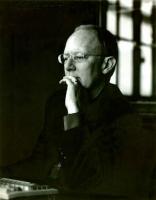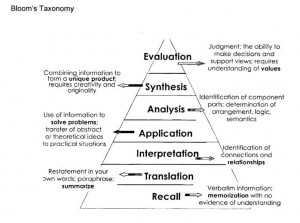The Dialectic of Fieldwork
Bridging the gap between self and other.
The anthropological method creates a social space through which one can bridge the gap between self and other, researcher and researched. According to Paul Rabinow, pictured here in a ‘reflective’ mode, we need to form an interpretation based on reflexivity rather than objectivity. Interpretation is the task of self comprehension through the understand of the cultural other. As we learn about a new or different culture or society, we come to learn about our own culture and society. Some anthropologists, and I would count myself among them, are critical of reflexive anthropology -we find that it has gone to far to the subjective (or intersubjective) side of the spectrum. A reasonable reflexive anthropology links a self recognition of the subjectivity of the researcher, with our dialogue with our research participants, and with a willingness to think critically about all sources of data or information.
Interpretation is the task of self comprehension through the understand of the cultural other. As we learn about a new or different culture or society, we come to learn about our own culture and society. Some anthropologists, and I would count myself among them, are critical of reflexive anthropology -we find that it has gone to far to the subjective (or intersubjective) side of the spectrum. A reasonable reflexive anthropology links a self recognition of the subjectivity of the researcher, with our dialogue with our research participants, and with a willingness to think critically about all sources of data or information.
It is important to understand how our social location influences our capacity to comprehend the social reality we are trying to observe. We should not, however, lose our grip on reality in the process.
Strengths and weaknesses of the anthropological method
Anthropologists and research participants exist in close physical proximity. Unlike other types of research anthropologists are seen with all of their warts and blemishes. We come to form friend-like relationships with the people we work with and write about. This is simultaneously a strength and a weakness.
As a strength, this methodological approach creates an opportunity for a researcher to come to understand the nuances and details of everyday life that are rarely seen, let alone lived, by researchers employing other types of research methodologies. Although the picture that emerges is often limited in its scope, it is still far more detailed and reflective picture of the reality of how people live than can ever be learned by a survey, a perusal of archival records, or interviews with leading members of a community.
The weakness of the anthropological method is twofold. First, the proximity of anthropologists to the people we write about and the duration of our stay in the field can create an image of the anthropologist as biased in favour of the community. Although it is true that most anthropologists empathize with the people among whom we have lived and about whom we have written, few anthropologists would agree that anyone’s interest is served through falsification. A more problematic second weakness stems from the potential problems connected to living in a community for the purpose of research. Despite living for a long period in a community, anthropologists do plan to return to their homes. Irrespective of their intentions, desires, or the sincerity with which they proceed, the fact that they are only visitors creates social distance. This distance creates a social context for community concerns about the sincerity of anthropologists.
Connecting reality to interpretation
Ultimately we need to be certain that we can connect our interpretations to reality. Anthropology is a social ‘science’ and as such owes a fidelity to the real world within which we live, work, and play. We need to constantly remind ourselves that interpretation divorced from the real world of facts, processes, situations, events, and the people we are studying and writing about might be better framed as fiction than as anthropology.


